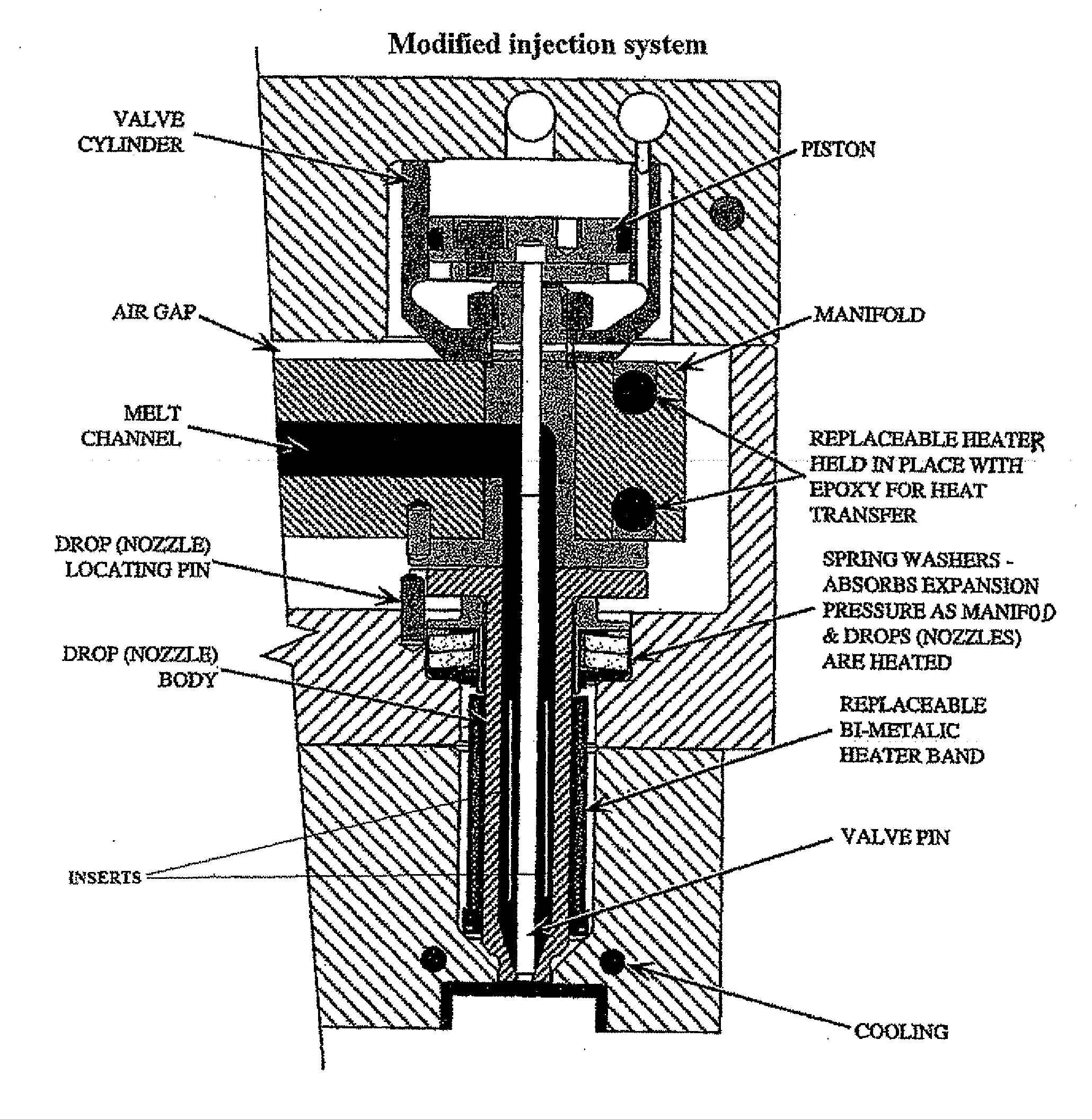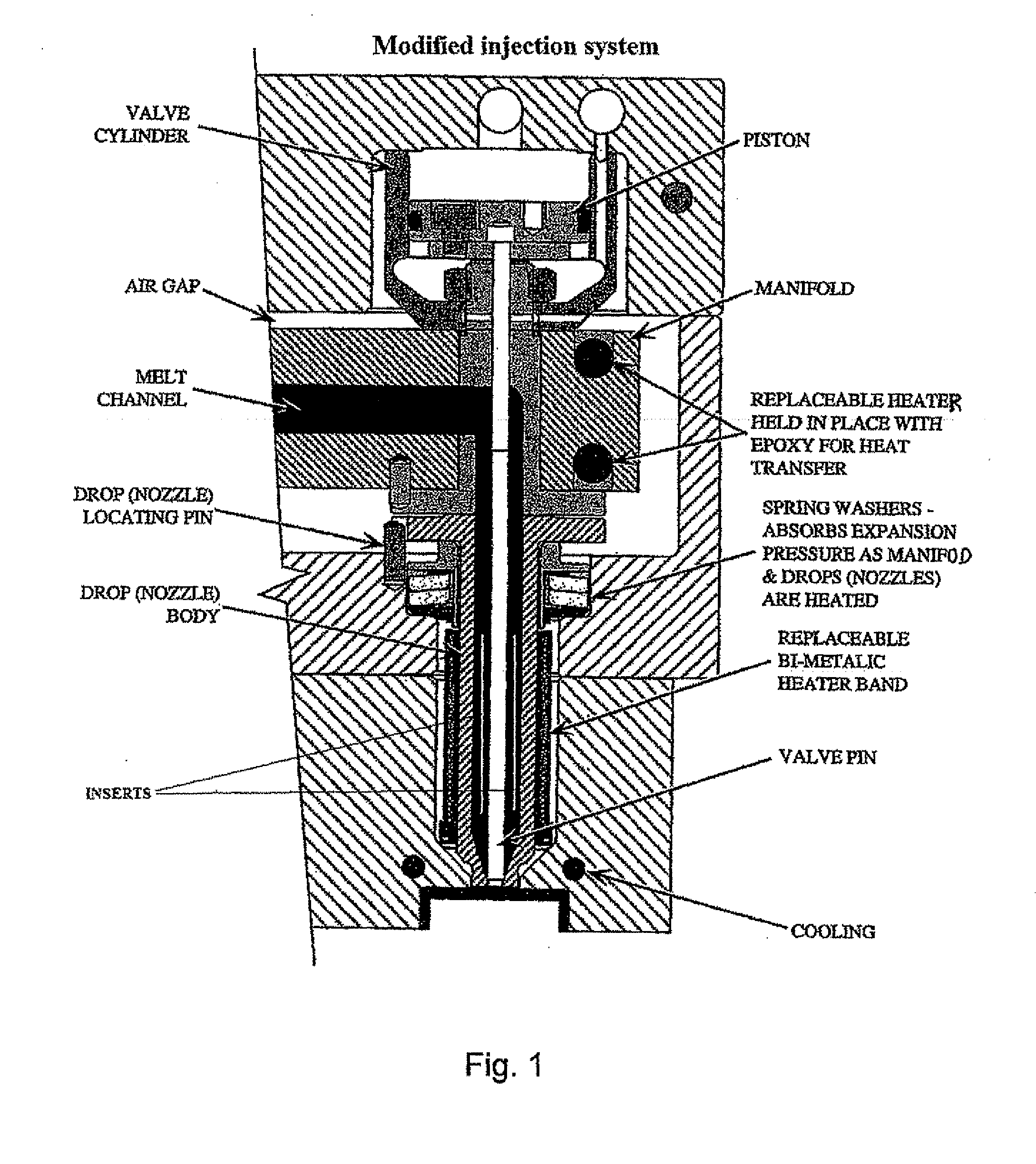Modified hot runner systems for injection blow molding
a technology of hot runner and injection molding, which is applied in the direction of synthetic resin layered products, transportation and packaging, and other domestic articles, can solve the problems of increasing the exposure of microorganisms, difficult if not impossible difficult to stretch the blow mold, etc., to achieve enhanced resistance to thermal deformation, improve the overall performance characteristics, and improve the effect of wall thickness
- Summary
- Abstract
- Description
- Claims
- Application Information
AI Technical Summary
Benefits of technology
Problems solved by technology
Method used
Image
Examples
examples
1. Injection System (FIG. 1)
[0109]a. A commercially available grade of a crystallizable polymer, being PET, is taken within a classical IV range of 0.78-0.82, like reference M&G Cobiter 80.[0110]b. The polymer material referenced under 1a. is converted on a classical injection machine, like type Huskey, operated at typical machine settings:
Extruder Barrel270-290°C.Nozzle270-290°C.Manifold275-295°C.Gates280-300°C.Mold Cooling Water10-15°C.Cycle Time10-60seconds[0111]c. Position 1b is repeated with a commercially available grade of a crystallizable polymer, being PET, with an increased IV range of 0.82-0.86, like reference M&G Cleartuf Max.[0112]d. Position 1b is repeated with a commercially available grade of a crystallizable co-polymer, being PET based, within a classical IV range of 0.78-0.82, like reference M&G Cleartuf 8006.
2. Hot Runner System
[0113]a. Positions 1a through 1d are executed with normal classical hot runner configuration for injected preform production.[0114]b. Posi...
PUM
| Property | Measurement | Unit |
|---|---|---|
| shrinkage percentage | aaaaa | aaaaa |
| thickness | aaaaa | aaaaa |
| temperature | aaaaa | aaaaa |
Abstract
Description
Claims
Application Information
 Login to View More
Login to View More - R&D
- Intellectual Property
- Life Sciences
- Materials
- Tech Scout
- Unparalleled Data Quality
- Higher Quality Content
- 60% Fewer Hallucinations
Browse by: Latest US Patents, China's latest patents, Technical Efficacy Thesaurus, Application Domain, Technology Topic, Popular Technical Reports.
© 2025 PatSnap. All rights reserved.Legal|Privacy policy|Modern Slavery Act Transparency Statement|Sitemap|About US| Contact US: help@patsnap.com



